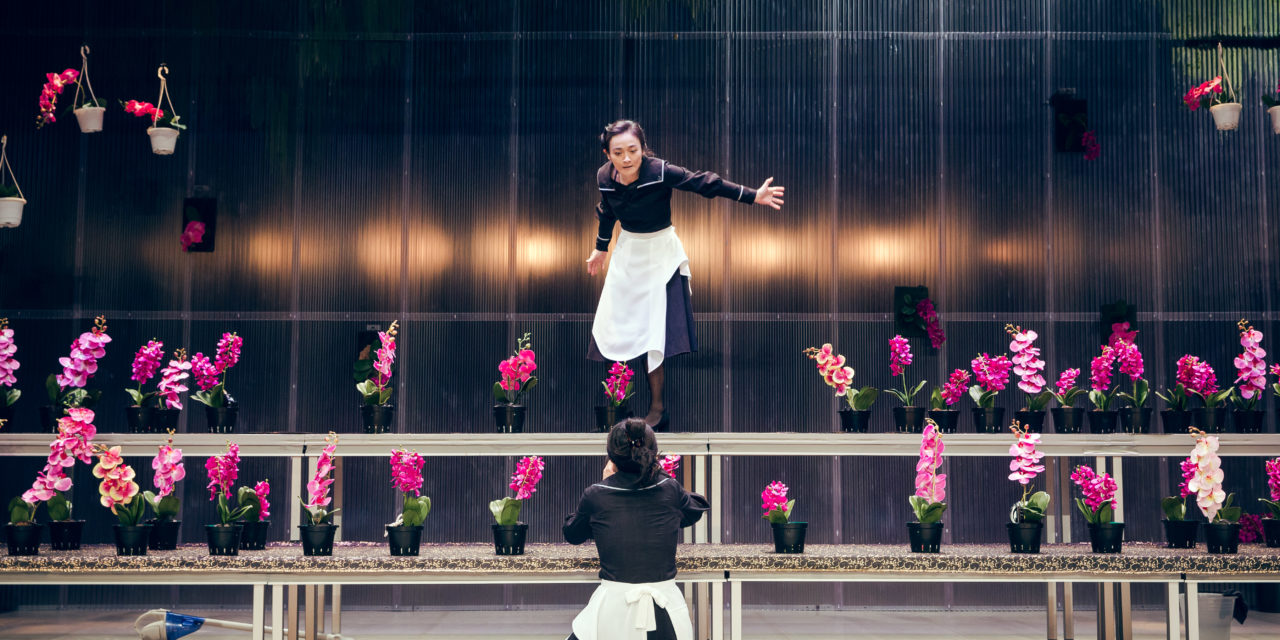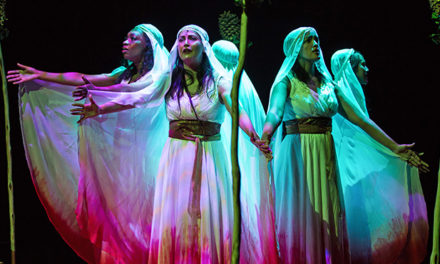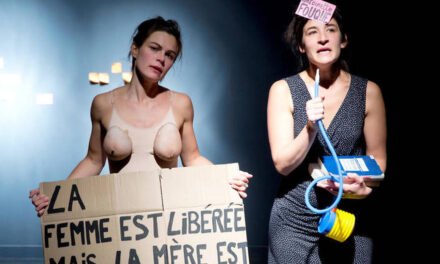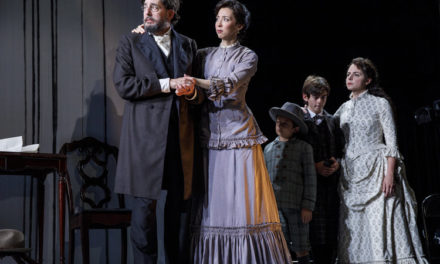The Taiwan-based theatre troupe, Yang’s Ensemble, used to deal mostly with Sino-centric cultures and societies in its works, but this year, the troupe turns to French dramatist Jean Genet’s classic, The Maids. As in his previous pieces, director Chinghsiang Yang imbues the play with vivid images and employs symbols and contrasts to highlight the performative aspects underlying the text and to explore the power struggles among the three characters.
The performance is no longer set in Madame’s bedroom as indicated in the playtext but in a bright, spotless greenhouse. At the center of the stage is a two-layered steel platform on which several pots of purple and red moth orchids (Phalaenopsis), a special flower species known as butterfly orchids in Taiwan, are neatly arranged. Such a juxtaposition of the cold metallic surface and the flamboyant markings of life is visually striking and emotionally tense.
On the one hand, these butterfly orchids, elegant and ostentatious, represent Madame, to whom the maids are obligated to attend carefully. On the other, the plants mirror the maids. Not only are they both assets possessed by Madame, but the two also lack individuality as a flower. As the role-playing games between the maids progress, the orchids transform into various objects, such as toys and phalli, which they play with in a manner similar to the way that Madame manipulates and humiliates them. In the end, each pot is overturned, a strong image that evokes Madame’s contempt of them and their counterattack to her condescension, but also gestures towards their self-destruction. Therefore, the uncanny, unique use of butterfly orchids in the production maps out the narrative trajectory, intertwines the characters, and deepens the subtexts and messages hidden beneath the surface.
The production’s powerful storytelling can also be perceived in its characterization. The two identically-dressed actresses playing Claire (Yiling TSAI) and Solange (Yenling HSU) succeed in personifying the sisters’ different attitudes and attributes, one graceful but repressed while the other hysterical but trying to be caring and portraying their mutually dependent yet detrimental relationship. In contrast to these two physically small, plainly-dressed Asian maids, Madame, played by Kate Stanislawski, a Polish actress who is tall, blonde and white, wears a sexy and sharp costume, exuding supremacy and female charm. The external distinction in physique and costume fully embodies the inner conflicts between Madame and the maids. But more important, by underscoring racial issues in the performance, the play takes on an additional layer of postcolonial discussion, subtly building up a conversation between past and present, colonizing Europe and colonized Taiwan.
Interestingly, Mrs. Stanislawski’s accented Mandarin, a native language that the maids master, seems to suggest that Madame controls the two maids on the surface, but to some extent, she is also controlled by their language and culture, by them. The master-slave relationship among these characters is not unidirectional. Also, the familiarity of language shortens the distance between the Taiwanese-played maids and local audiences, thus enabling the latter to culturally identify with and have deeper empathy for the former.
In this re-imagination of a classic, the director develops a fresh theatrical language, successfully linking the French text to Taiwanese images. The language itself also becomes a stage, one that recalls Taiwan’s colonial history and conjures up the fight for cultural hegemony between the East and the West at the present.
The Maids ran from June 23 to 25, 2017, at Wellspring Theater, Taipei, Taiwan. Review originally published online at Performing Arts Review Forum, a Taiwan-based theater review platform funded by the National Culture and Arts Foundation.
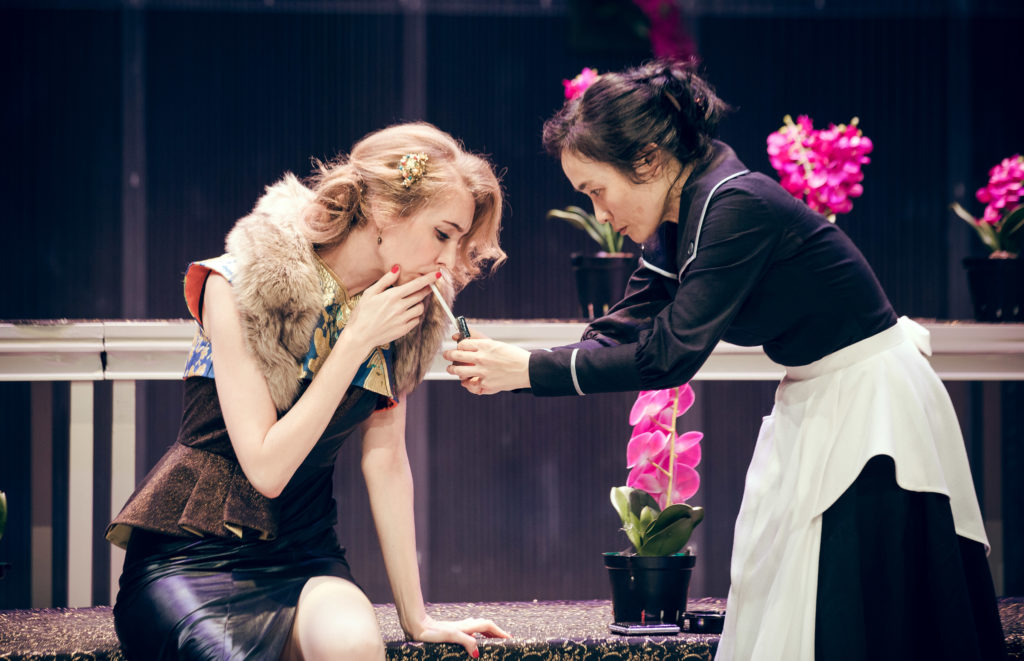
Jean Genet’s The Maids. Directed by Chinghsiang Yang . Photo Credit: Terry Lin
This post was written by the author in their personal capacity.The opinions expressed in this article are the author’s own and do not reflect the view of The Theatre Times, their staff or collaborators.
This post was written by Cheng-Han Wu.
The views expressed here belong to the author and do not necessarily reflect our views and opinions.

